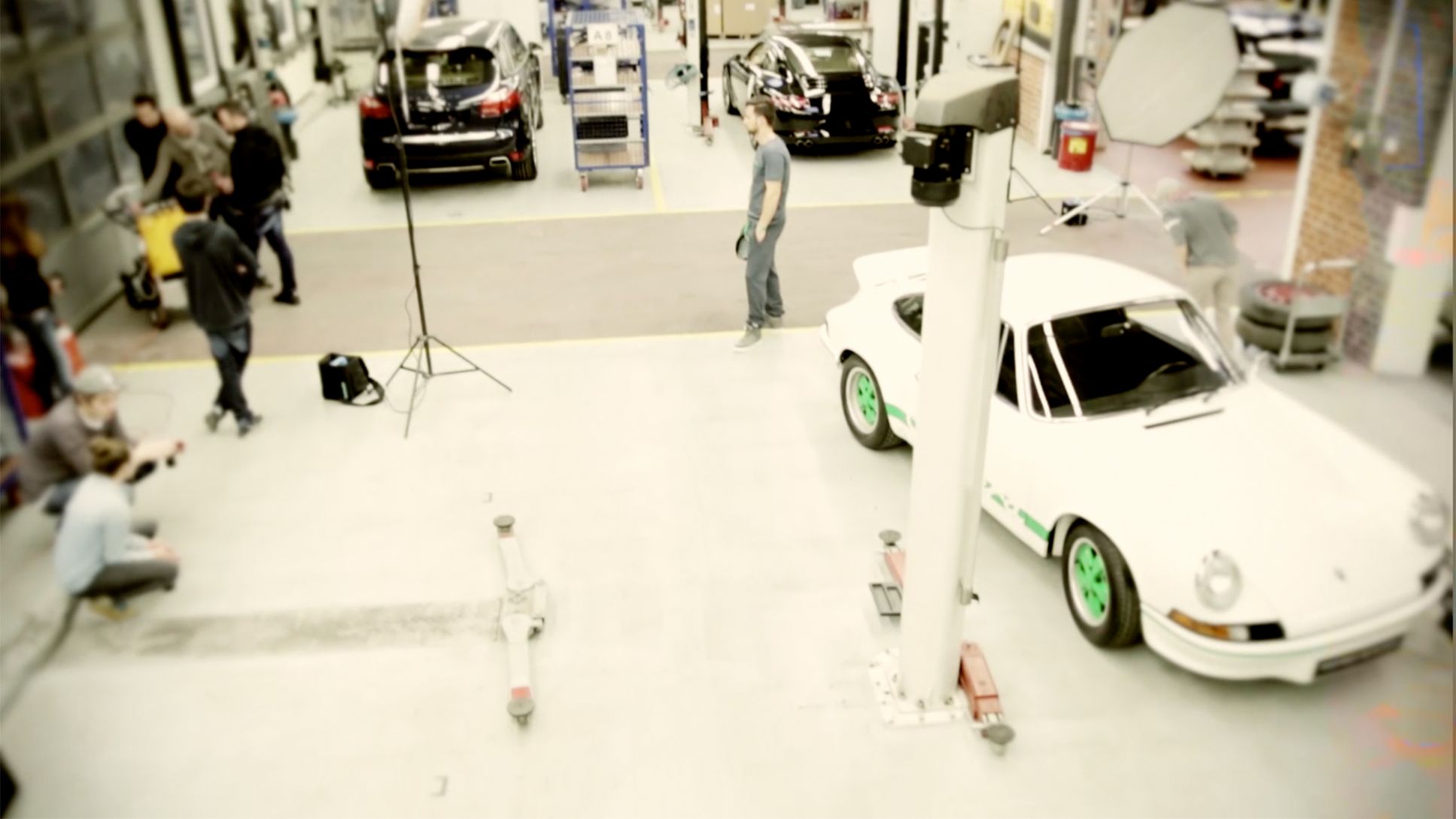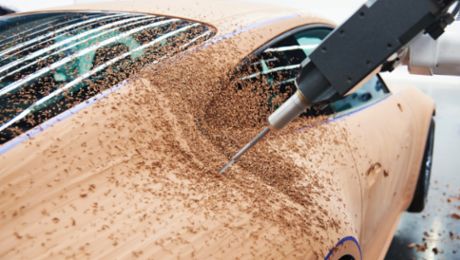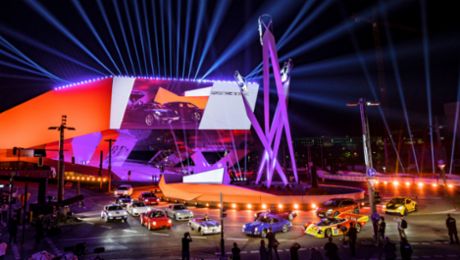For many automobile enthusiasts, the RS 2.7 from the 1972/73 model year remains THE one and only 911 to this day. One reason for this is that the top speed of more than 240 km/h enabled by the model's 2.7-litre engine made the RS 2.7 the fastest Porsche production model of its time. However, there was another detail that ensured the high-performance sports car would become a true sensation: its "duck tail" – a distinctive plastic rear spoiler that also gave the RS 2.7 its nickname. These days, the "Duck Tail" continues to enjoy iconic status around the world. It was therefore clear that at some point the Porsche Driver’s Selection team would create a collection in honour of the legendary sports car.
Unexpected sales sensation.
The RS 2.7 was originally planned as a limited edition series of only 500 units. This was done because series production was necessary for approval to participate in GT-class motor racing. No one expected that there would be any great demand for the vehicle. However, the exceptional look and uncompromising sportiness of the RS 2.7 quickly conquered the hearts of numerous sports car fans, who went out and bought the car and began driving it to work. Then, on the weekend, they would take the hot-blooded high-performance model out to the racetrack and push it to the limit.
The RS 2.7 thus sold out completely after a few months. Porsche did go on to build some more, but in the end only 1,580 units ever rolled off the Porsche factory line. Only a few models are still in good condition today, and these fetch a pretty penny from collectors. The fact that the RS 2.7 is so rare makes it all the more wonderful that the Porsche Driver’s Selection is now bringing its look back onto the street with T-shirts, caps, cups and even suitcases.
A lot of history: at the RS 2.7 photo shoot in Plant 1.
Naturally, a photo shoot by Porsche's ‘select’ lifestyle magazine for a model with such an impressive history couldn't be done just anywhere. It had to be a special place. One steeped in history as well, and also a location clearly connected to Porsche. After all, the idea was to showcase a collection for a true 911 icon. The perfect location was therefore Plant 1. Although the RS 2.7 wasn't built there, it was nevertheless the place where none other than Ferry Porsche decided to continue manufacturing additional models of the unexpected sales sensation.
For the photo shoot, the Porsche Museum provided an original RS 2.7 in the model's typical colour – Grand Prix White, with wheels and "Carrera" side stripes in Viper Green.
In just one day, the seven-member photo-shoot team captured eight motifs, staging 18 products from the RS 2.7 Collection in, on and around the sports car legend. But check it out for yourselves:




